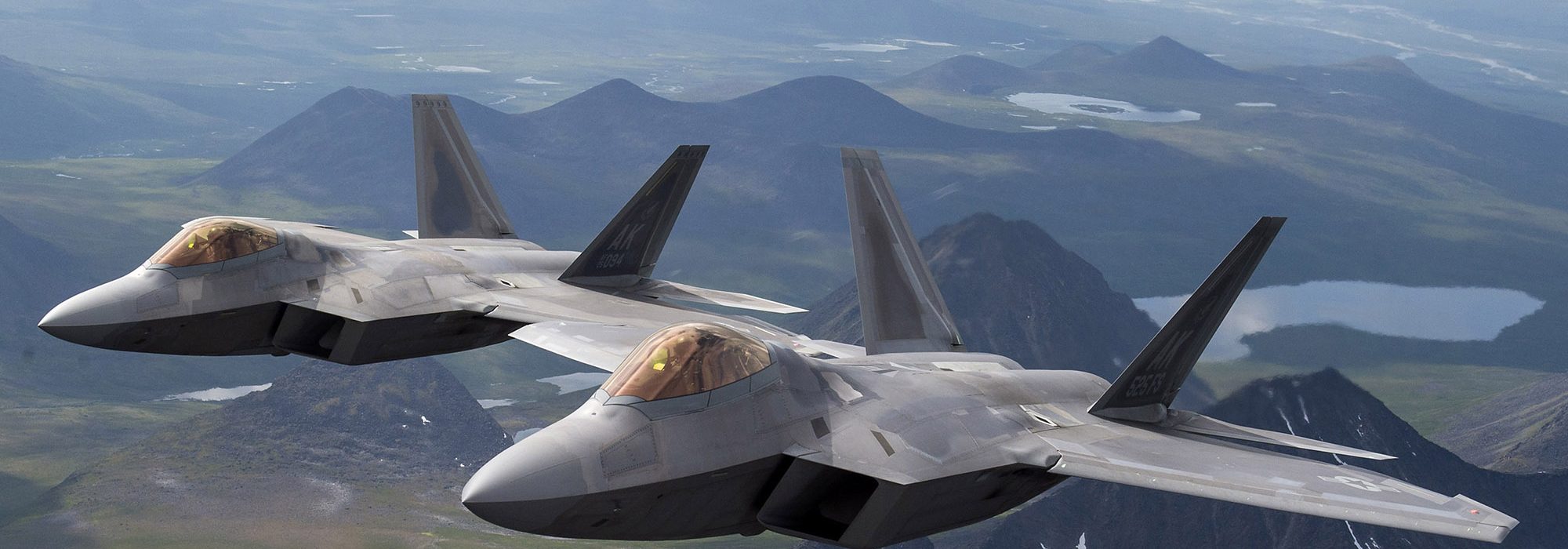After two decades of cuts and high op tempo, the Air Force budget must be rebalanced to fund growth and modernization.
In the years following the Cold War, and again following the 2007 troop surge to Iraq, the Air Force and its modernization accounts were dramatically cut. Now, after decades of hard use and too little investment, mission demands far outpace available capacity.
In September 2018, then-Secretary of the Air Force Heather Wilson made this precise point when she unveiled “The Air Force We Need,” the initial results of a congressionally mandated study of the aircraft inventory needed to support the 2018 National Defense Strategy (NDS). That study concluded the Air Force needed to grow in order to align with DOD’s strategic shift toward long-term great power competition. Two additional studies mandated by the 2018 National Defense Authorization Act supported its conclusions.
Three major budget trends combined to bring the Air Force to this point:
- Compared to the Army and Navy, the Air Force absorbed the largest cuts to annual budgets in the 12 years between the end of the Cold War and the September 2001 terrorist attacks on the United States.
- Obama administration defense reductions and the 2011 Budget Control Act (BCA) created another hole in the service’s budget that it filled by further cutting its force structure, modernization programs, and end strength. While subsequent congressional agreements provided some relief from the 2011 BCA’s budget caps, available funds were still far lower than what was required for maintaining a healthy force.
- Finally, plus-ups to the Air Force’s budget over the last few years, while significant, have not approached levels needed to compensate for the quarter-century-long, post-Cold War defense modernization holiday.
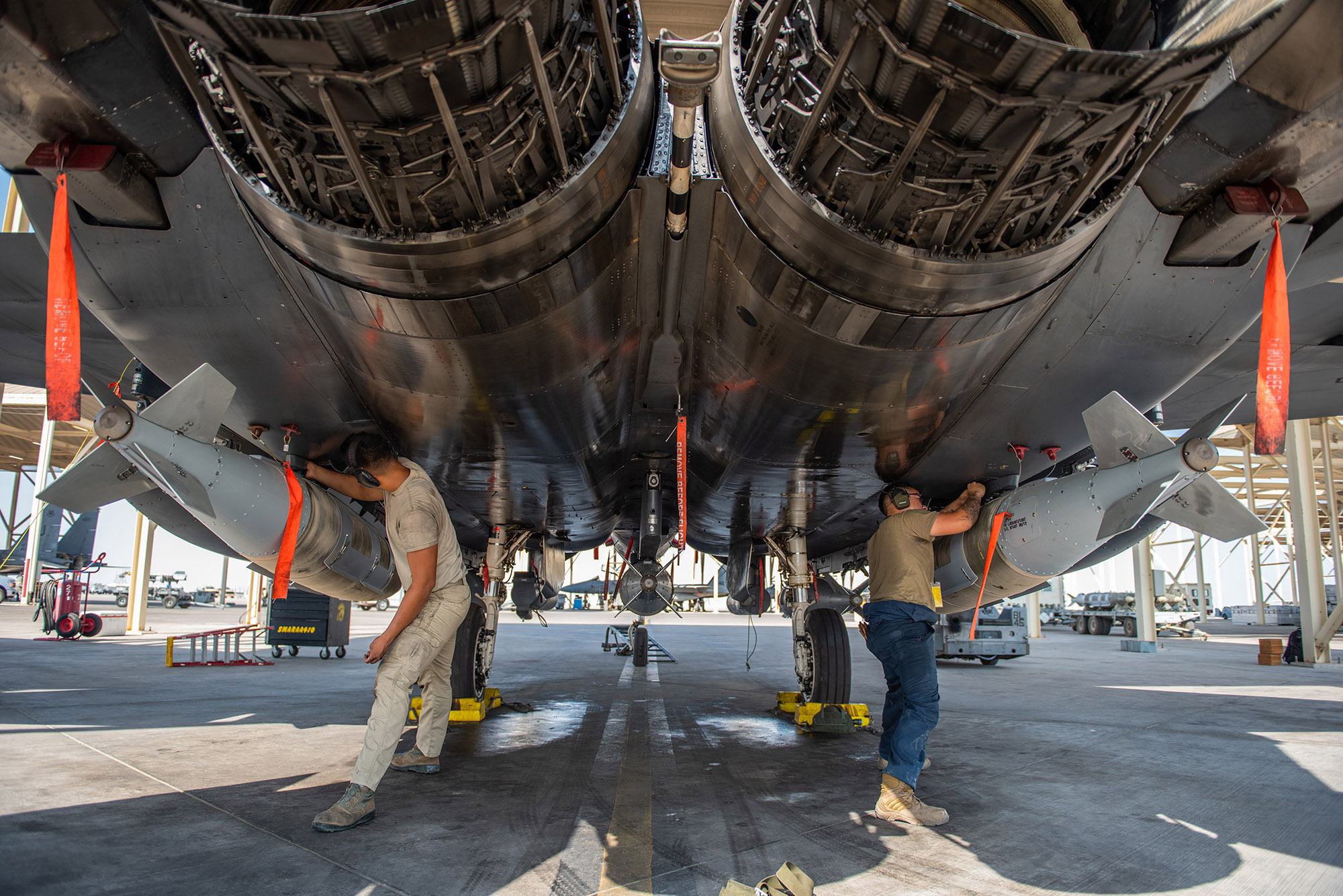
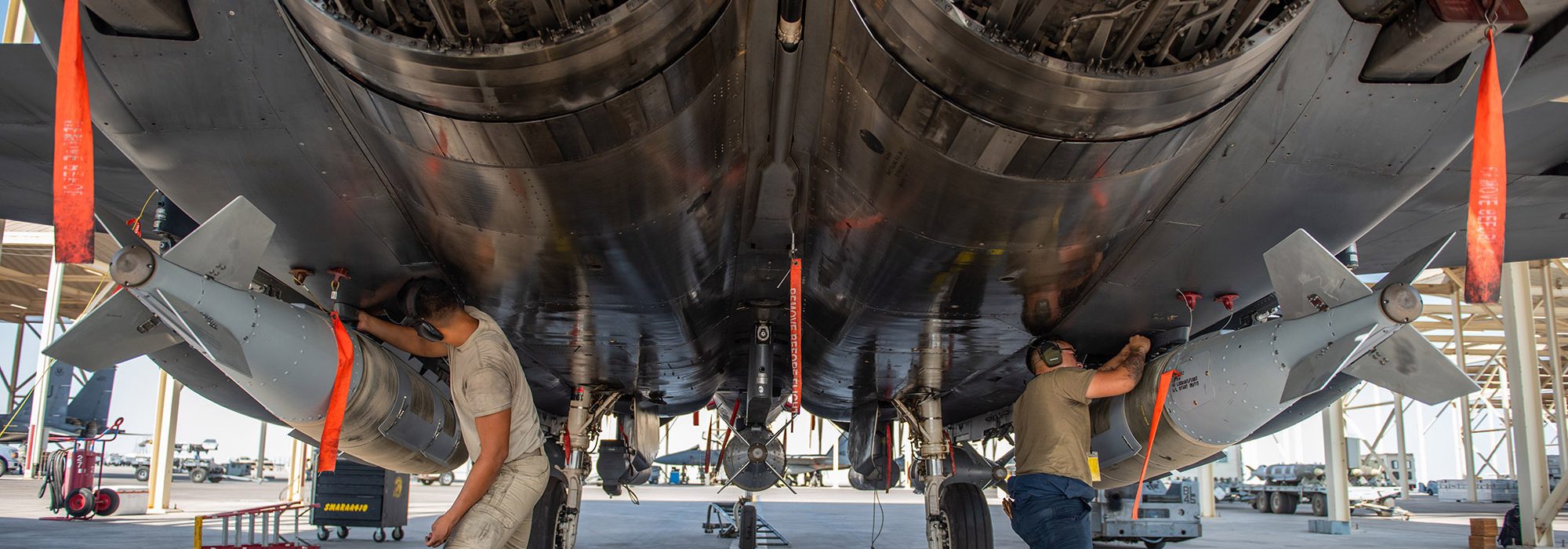
Not All Blue
The Defense Department only allocates 23 percent of its budget to Air Force “Blue” programs (which excludes pass-through funding for programs, mostly in national intelligence, that the service does not control). However, the budget is not presented this way. Instead, the Air Force budget request includes more than $39 billion in pass-through funding—just over 19 percent of the requested total obligational authority (TOA) under the service’s budget. This is as much as the total new aircraft procurement funding for the past four years. Put another way, $39 billion could pay for more than 400 new fifth-generation F-35As.
Common assumptions that the services share even thirds of funding (the Marine Corps being part of the Department of the Navy) fuel a false impression that Air Force acquisition is in line with that of the Army and Navy departments. For instance, an August 2019 report by the Congressional Budget Office included a chart showing Air Force acquisition funding as far outstripping acquisition investment by the other services. Separating Blue- and non-Blue funding changes the picture dramatically, however, such that proposed Air Force investment represents only about 23 percent of total obligated authority versus 28.6 percent for the Navy and 26.7 percent for the Army.
In this article, unless otherwise noted, we will focus only on the Air Force’s Blue budget.
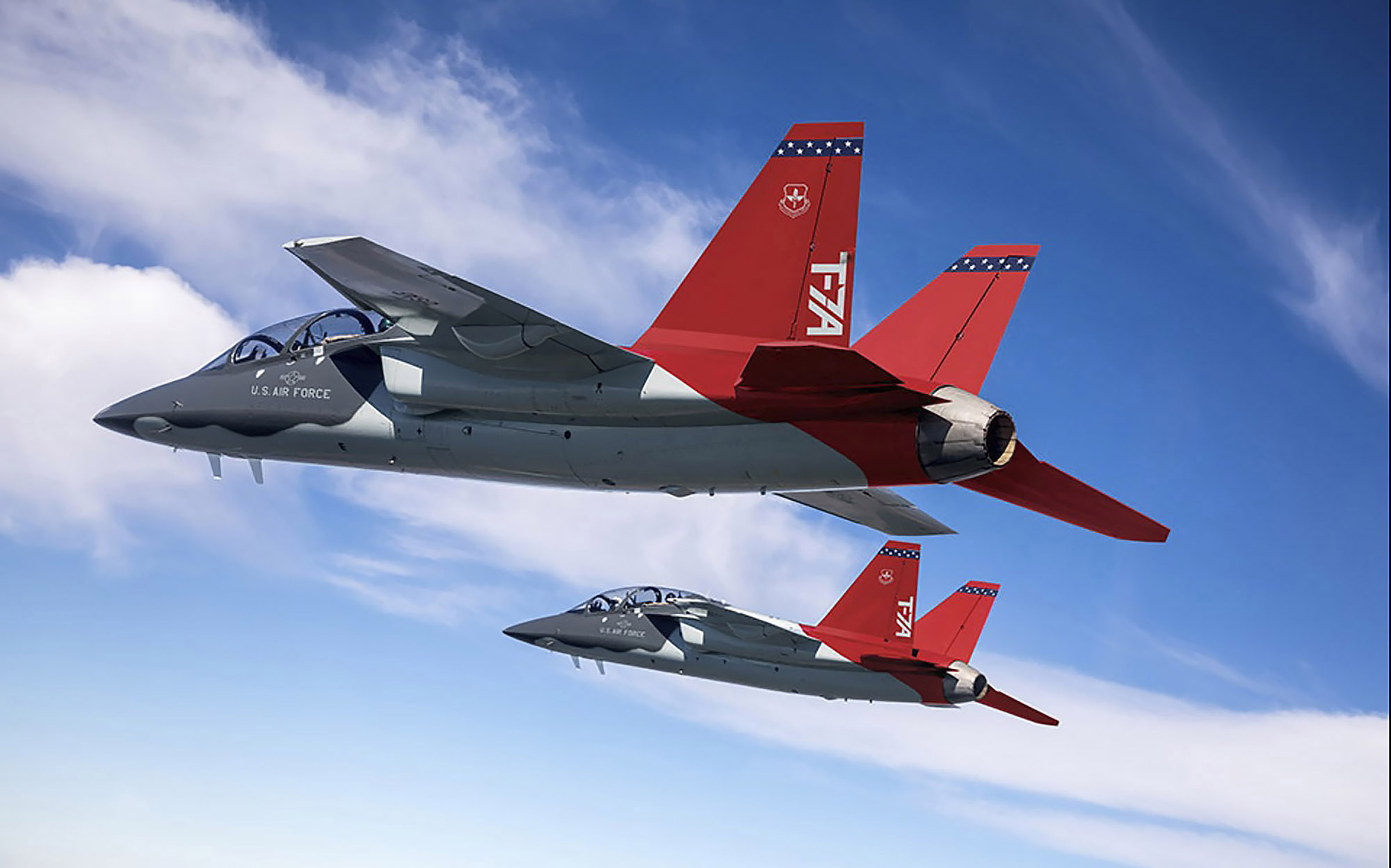
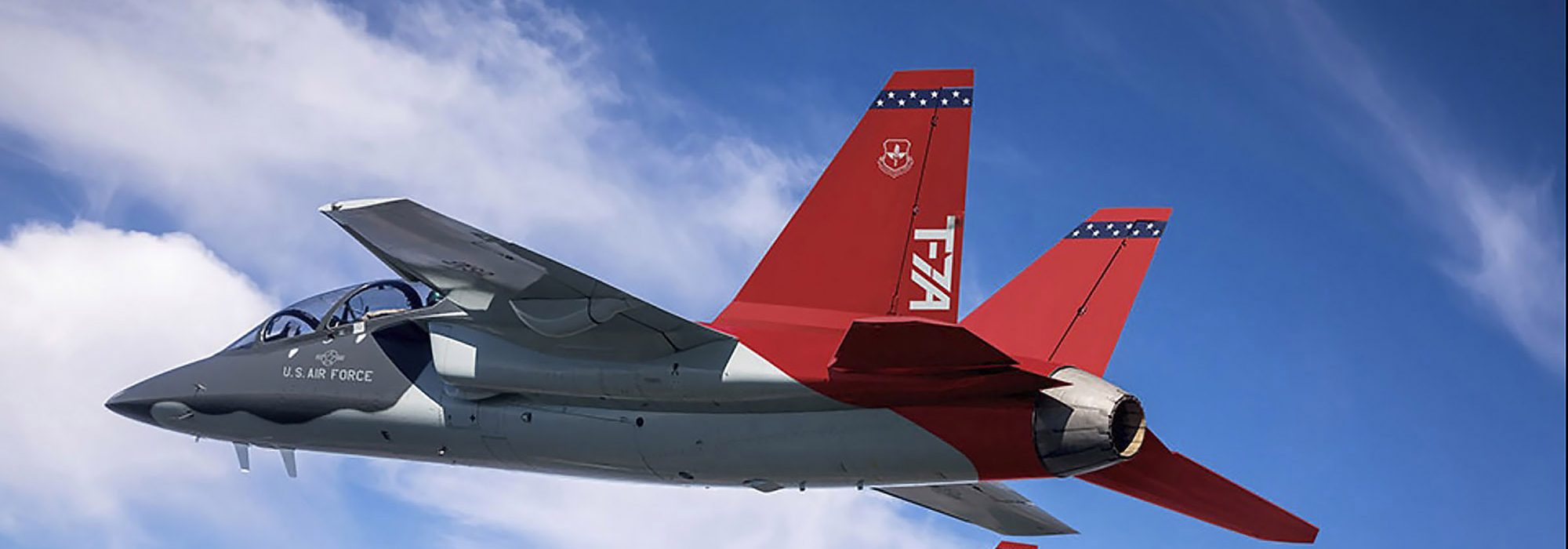
After the Cold War
If fully appropriated, the president’s $165.6 billion request for the Air Force in fiscal 2020 would be the service’s 10th highest budget since fiscal 1962. Yet, while that would help fund long-overdue recapitalization and modernization, it is just a start at restoring funding lost in the aftermath of the Cold War, when many of the Air Force’s premiere modernization programs were curtailed, delayed, or canceled.
During the 13-year period from 1989 to 2001, the Air Force absorbed the largest cuts among the services in four of the five budget categories.

Graphic: Dash Parham/staff
The Air Force’s TOA dropped by 31.6 percent from 1989 to 2001, significantly more than the 28.3 percent cut the Navy endured and the 29.2 percent hit to the Army budget. Yet, this only tells part of the story. The Navy and Army were able to absorb much of their cuts in operations and maintenance, dropping O&M investment by 26.3 percent and 24.6 percent, respectively. The Air Force had no such luxury. High op tempo to enforce two no-fly zones over Iraq, support NATO’s air war against Serbia, and provide forces for other operations meant the Air Force could cut just 1.4 percent from O&M. That meant finding savings elsewhere, including cutting the size of its force. A 2018 Mitchell Institute report noted the service lost about half of its force structure after 1991. In the wake of the Vietnam War, USAF force posture declined to about 12,000 aircraft and ICBMs and remained roughly at that level until 1991, when the “Base Force” plan of Army Gen. Colin Powell, then Chairman of the Joint Chiefs of Staff, shrank the Air Force to only about 6,500 aircraft and ICBMs.
2008 to 2015: The Second Hit
Following the Sept. 11, 2001, terrorist attacks on the United States, military budgets rose significantly. The Air Force received additional base budget and supplemental funding for Overseas Contingency Operations (OCO) to pay for increased op tempo and to procure capabilities needed for operations in Afghanistan and, later, Iraq.
Most of the service’s aircraft procurement investment in this period funded an increase in remotely piloted aircraft (RPA) to meet combatant commanders’ demands for intelligence, surveillance, and reconnaissance and light-strike capacity, as well as to recapitalize portions of the tactical and strategic airlift force. Most of these aircraft were suited to permissive environments where air defenses were minimal, and they came partly at the expense of major weapon systems designed for high-end conflicts, such as the F-22 program.
In the context of 2018 National Defense Strategy, Todd Harrison of the Center for Strategic and Budgetary Assessments dubs this period “a hollow build-up” for the Air Force. While funds were largely concentrated on counterinsurgency warfare priorities, risk was accepted in mission areas that are now deemed essential in an era of renewed great power competition.
Beginning in fiscal 2009, the Air Force’s overall procurement, research, development, test and engineering, and military personnel accounts all declined, while Air Force O&M funding increased to its highest level ever in fiscal 2020. This O&M trend was not unreasonable, given sustained high op tempo and the increased cost of maintaining and operating an aging force. By 2013, the Air Force’s funding for new aircraft was at the lowest level ever as a percentage of its topline budget—4.3 percent—as a result of the 2011 Budget Control Act. At the same time, funding for O&M and personnel began to flatten, due to increased concerns over its near-term readiness.
Viewed from a defense-wide perspective, the fiscal 2008 to fiscal 2011 period saw the Air Force experience the lowest share of defense spending since the Eisenhower administration, dropping to 19.4 percent in fiscal 2008, 19.4 percent in fiscal 2010, and 19.3 percent in fiscal 2011. No other service has ever reached such a low percentage; the Army’s low point was 22.6 percent in 1959; the Navy’s was 24.6 percent in 2008.
Since then, the Air Force’s Blue budget has rebounded, reaching 20.8 percent in 2014 and an estimated 23 percent in the president’s 2020 request. Nevertheless, this is well below historical averages. From 1962 to 2020, the Blue budget averaged 25.8 percent of DOD’s TOA.

“The Air Force We Need ”
The 2018 National Defense Strategy outlines DOD’s intent to create a future force that is more lethal, survivable, and capable of defeating great power aggression in contested environments. “We cannot expect success fighting tomorrow’s conflicts with yesterday’s weapons or equipment,” it argues.
There have been numerous assessments on what the Air Force could or should do to align with the 2018 NDS. In particular, reports submitted to Congress in early 2019 on three major studies made a number of recommendations for increasing the size and improving the capabilities of the Air Force’s aircraft inventory. Reports authored by the Center for Strategic and Budgetary Assessments (CSBA) and the MITRE Corporation both recommended the Air Force should:
- Increase investment in long-range capabilities, including tankers.
- Increase the size of the nation’s bomber force, procure more than 100 stealth B-21s, and do not cut current bombers (B-1s, B-2s, and B-52s) until significant numbers of B-21s are operational.
- Increase annual procurement of F-35A fifth-generation stealth fighters and do not cut F-35A investments in the near-term to pay for other programs.
- Consider adapting the T-7A, the Air Force’s new pilot training aircraft, to support homeland defense, which could free up fifth-generation fighters for the missions for which they were designed.
Other reports, notably one released by the National Defense Strategy Commission and another by the Mitchell Institute for Aerospace Studies, made similar recommendations.
Air Force Procurement Funding
Although analysis of the Air Force’s budget should not be the only means used to assess progress toward its desired future force, it can help illustrate trends that could inform national defense policy and resource decision-makers. What matters at a macro level is that long-standing downward trends in capital investment accounts have only been mitigated, not reversed, and there are new trends that should be of concern. In particular, the Air Force’s overall procurement budget—16.7 percent of the total 2020 request—is significantly less than the 24 percent of its total TOA it has averaged since 1962. The $10.8 billion requested for new Air Force aircraft in 2020 is also well below historic averages. In constant 2020 dollars, Air Force aircraft procurement averaged $14.4 billion per year from 1962 to 1989; it peaked at $23.6 billion annually during the peak years of DOD’s last real defense buildup in the 1980s. That means the Air Force’s planned 2020 aircraft procurement budget is about half of what was spent, on average, from 1981 to 1986.
Based on the aggregate average cost of new military aircraft, the Air Force may require an additional $10 billion or more per year for aircraft procurement alone, according to recent studies by MITRE, CSBA, and the Air Force. Not including trainers and small unmanned aerial vehicles, the Air Force is still only acquiring about 100 aircraft per year and less than 70 combat aircraft per year. By comparison, the Air Force procured an average of about 280 total aircraft per year and over 220 combat aircraft per year from fiscal 1982 through fiscal 1989. In fact, the Air Force should be buying more than double that number, possibly over 200 total new aircraft per year, in order to recapitalize about 4,000 aircraft (the Air Force’s aircraft inventory minus its training aircraft and Operational Support Airlift/VIP Special Air Mission aircraft) over a 20-year period. That includes a sustained rate of at least 72 fighters per year.
Indeed, the Navy purchased more combat aircraft than the Air Force from 2008 to 2019. Common sense dictates the opposite should be true, given the Department of the Navy now has about 38.7 percent of DOD’s total inventory of 3,560 fighter/attack and bomber aircraft, versus 61.3 percent for the Air Force.
Air Force RDT&E Funding
Research, Development, Test, & Evaluation (RTD&E) funding trends are another indicator of the Air Force’s modernization progress. From 1962 to 2020, the Air Force’s Blue budget RDT&E funding averaged about $19.2 billion per year in constant 2020 dollars and was less volatile year-by-year compared to other Air Force budget areas. From fiscal 1962 until the end of the peak years of the Reagan defense buildup, the Air Force’s annual RDT&E budget averaged about $17 billion and it has since averaged just under $20.2 billion per year. This equates to approximately 14.5 percent of the Air Force’s budget over that period of time, with the lowest single-year percentage—12.3 percent—occurring in fiscal 1980 just before the Reagan buildup. This historical low was tested in fiscal 2015 when the Air Force’s RDT&E dropped to 12.7 percent of its budget.
After the Cold War, RDT&E increased as a percentage of the Air Force’s TOA due to the administration’s decision to forego procuring a generation of major new weapon systems (with exceptions) and increase RDT&E spending to help keep the defense industrial base warm and prepared to ramp-up new programs when needed.
Since 2016, Air Force RDT&E spending has almost doubled to $35.2 billion—an all-time high as a percentage of its Blue budget. These recent RDT&E increases make sense given the need for new aircraft suitable for operations in increasingly contested environments, modernizing two of the three legs of the US nuclear triad, and developing hypersonic weapons, directed-energy systems, space systems, and autonomous technologies. Yet with Air Force procurement funding lagging, 2019 and 2020 are the only two fiscal years where any service has ever seen RDT&E funding exceed procurement. This welcome and necessary uptick in research investment must quickly translate to a significant increase in procurement of new aircraft and next-generation capabilities; new technologies will fail to deliver combat value unless they are purchased in operationally significant quantities.
A Constraining Factor: O&M
Operations and maintenance funds pay for aircraft flying hour programs, weapons systems support, wages for most Air Force civilians, contractor support, facilities sustainment, restoration, and modernization, and the service’s base operating support portfolios. In general, when overall Air Force TOA declines, O&M requirements are more stable or decline at a lesser rate. This is evident following the peak years of the Reagan administration’s defense buildup, during the budget downturn after the surge to Iraq, and after implementation of the 2011 BCA. Airplanes still need to fly to meet immediate mission demands.
One of the more significant trends in DOD’s budget over the last 20 years has been the rise of O&M as a percentage of total spending. This is also true for the Air Force’s budget, despite major force structure reductions absorbed since the end of the Cold War. From 1997 to 2011, the Air Force’s O&M budget experienced real growth of 105 percent, well above growth in the Blue budget, which grew by about 60 percent. In 2011, O&M spending hit a record $69 billion, 45.4 percent of TOA. While its O&M growth rate has moderated somewhat in the last couple of years, the $64.2 billion requested for O&M in 2020 represents the Air Force’s sixth highest O&M budget ever. Even now, O&M programs constitute almost 39 percent of the Air Force’s Blue budget, well above the historical average of 28.7 percent from 1962 to 1989.
Since the Cold War, high op tempo, significant growth in O&M requirements, prioritities placed on improving near-term readiness, and procuring aircraft to support counter-terror and counterinsurgency operations helped to reduce resources available for the Air Force to develop and acquire new capabilities suitable to future high-end operations. As aging aircraft will continue to require large O&M investments, this account cannot be seen as a source for funding new acquisition programs to develop “The Air Force We Need.”
Conclusion
Historically, the United States has ramped up defense spending when challenged by significant threats, then throttled back as threats abated. To a notable extent, this pattern was broken for several generations during the Cold War. Nevertheless, many elements of the US military decreased in size after the Vietnam conflict as the capabilities of individual weapon systems improved. Except for a short period during the 1980s, the overall capacity (size) of US forces, including the Air Force, steadily decreased during that time, and the trend continued at an accelerated pace after the Cold War. The Air Force alone lost nearly 65 percent of its combat air forces from 1960 to 2000, and another 22 percent since 2001.
Today, the Air Force is too small, too old, and lacks the degree of survivability needed to support the 2018 National Defense Strategy. Without exaggeration, it now operates the smallest and oldest combat air force since it became a separate service in 1947. Procurement of new bomber and fighter aircraft was nearly halted for a 25-year period after the Cold War, with the exception of two small, silver-bullet fleets: 187 F-22 stealthy air superiority fighters and 21 B-2 stealth bombers. As a result, the Air Force had to extend the service lives of many of its combat aircraft, taking on additional risk.
The Air Force’s procurement spending today is therefore insufficient to both modernize and grow its capacity by the 25 percent needed to achieve the “The Air Force We Need.” Capabilities added since 2002 focused on niche counterinsurgency capabilities instead of capabilities for conflicts with peer adversaries, which require building a force to deter and, if necessary, prevail against great power aggression.
The post-Cold War defense modernization holiday that lasted for decades is a major reason why the Air Force has a significant strategy-resource gap. The Air Force’s topline and modernization budgets dropped precipitously in the aftermath of the Cold War and again following the 2007-2008 troop surge to Iraq. After reaching a nadir in fiscal 2013, the Air Force’s share of the defense budget slowly increased, aided in part by the Bipartisan Budget Act of 2015. From fiscal 2016-2020, the Air Force’s topline budget increased by about 3.7 percent real growth per year. While this modest increase helped the Air Force address some of its most critical readiness problems, it has not placed it on a stable trajectory in support of the 2018 National Defense Strategy.
Building the Air Force our nation needs will require the administration and the US Congress to work together to increase the service’s annual budget. Overall procurement should be increased, with new aircraft procurement among the highest priorities. Additionally, the long-standing trend of very high O&M growth should be reversed, and the more recent high levels of RDT&E must transition to fund procurement of new aircraft, capabilities, and next-generation munitions needed to survive and achieve effects in future contested battlespaces.
Absent a commitment to truly modernizing USAF, “The Air Force We Need” will remain out of reach—to the detriment of America’s security.
Mark Gunzinger is the Director for Future Aerospace Concepts and Capabilities Assessments at the Mitchell Institute for Aerospace Studies. Carl Rehberg is a Non-Resident Senior Fellow at the Center for Strategic and Budgetary Assessments
